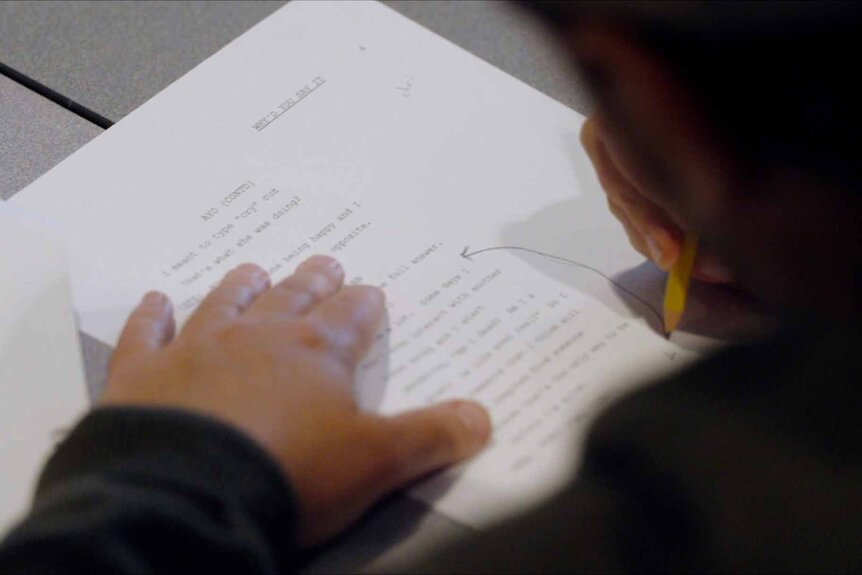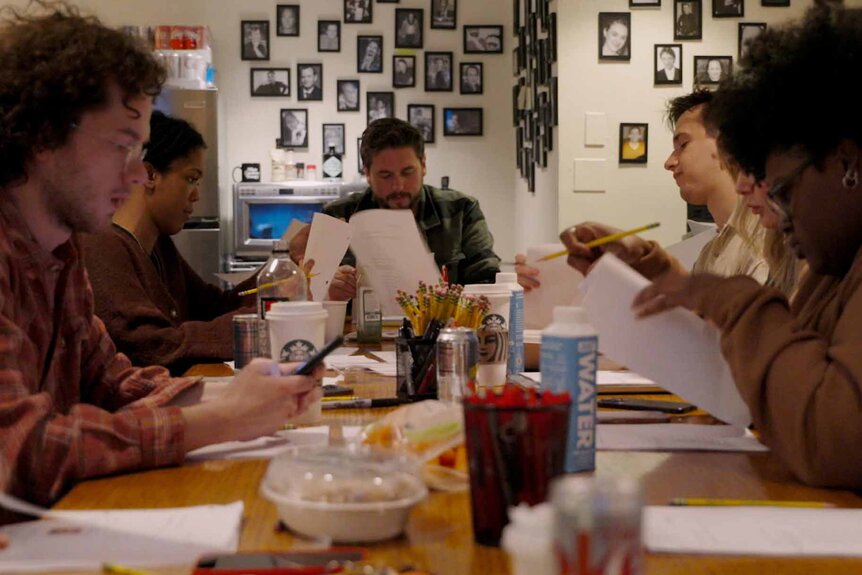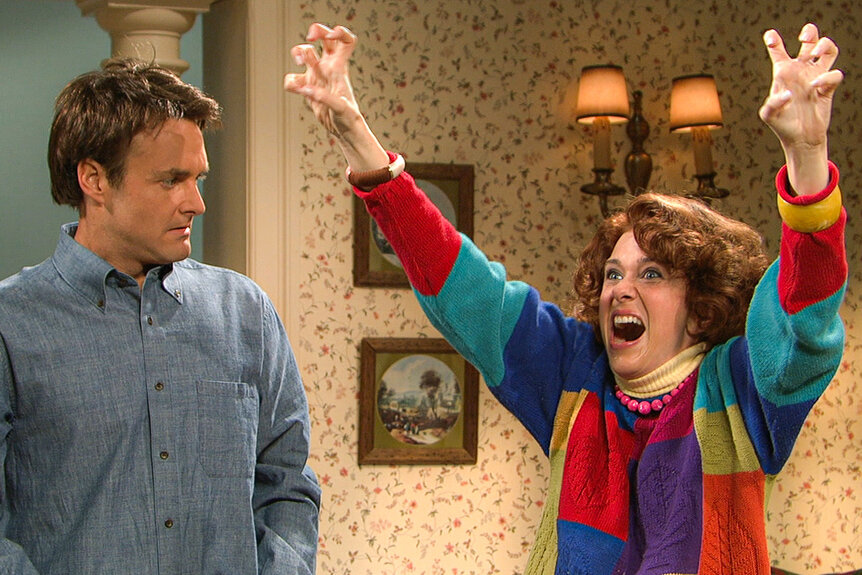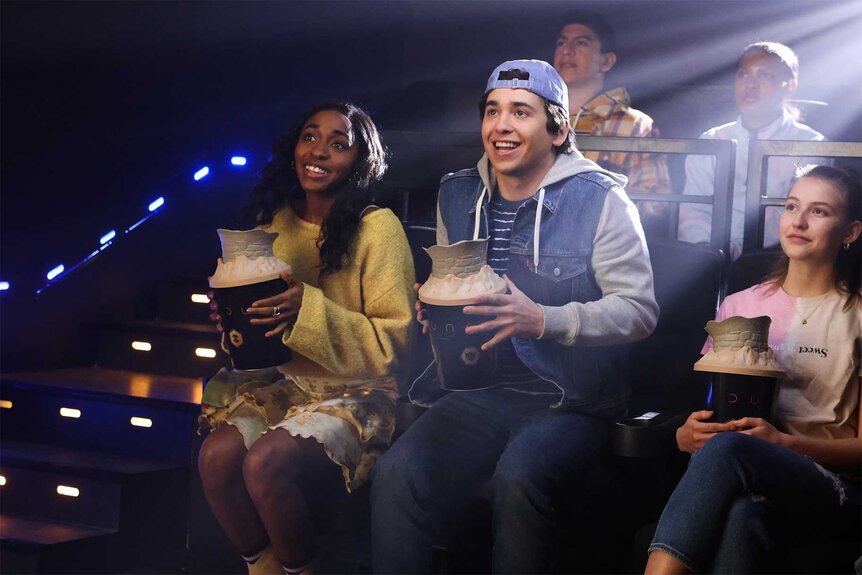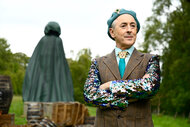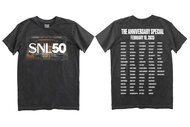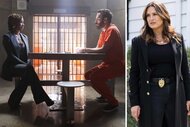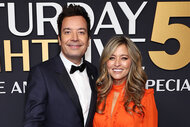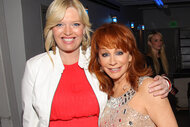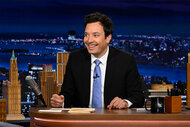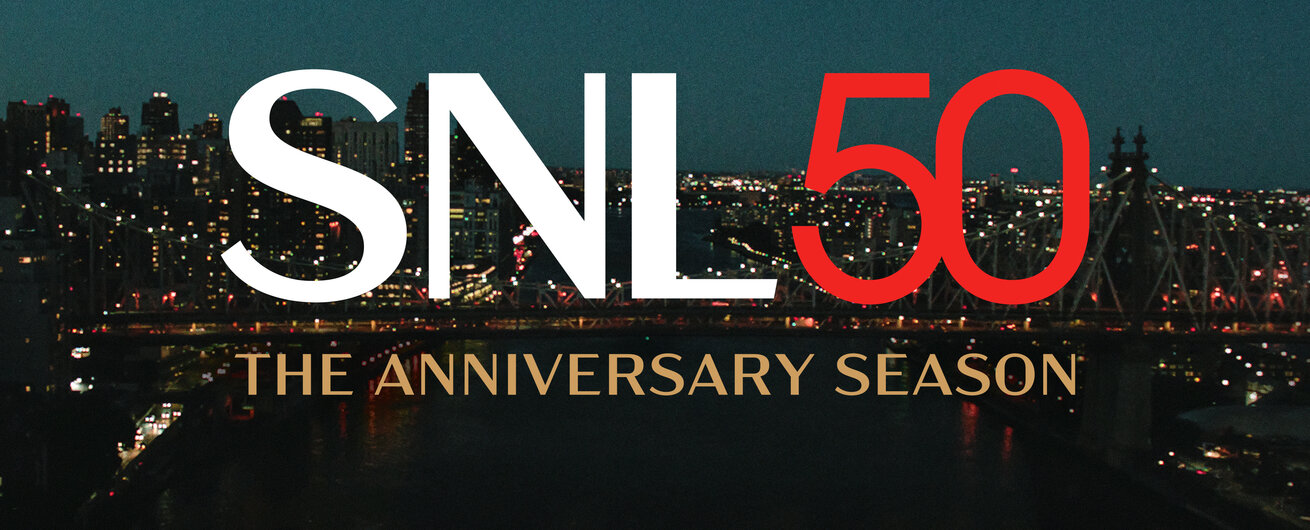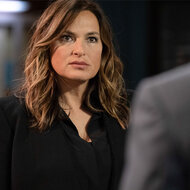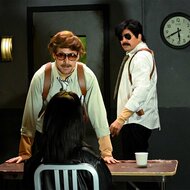How Do SNL Sketches Make It To Air? Peacock’s SNL50: Beyond Saturday Night Explains
Follow the life cycle of an SNL sketch from a marathon all-night writing session to the final test of a sketch's viability before hitting the air.
A good Saturday Night Live sketch can live on for years.
Decades after Mike Myers and Dana Carvey first debuted on "Wayne’s World" or Will Ferrell and host Christopher Walken combined their talents on “More Cowbell,” the classic sketches continue to get laughs today.
But with a stable of talented comedy writers all competing for airtime each week, just how do producers choose which sketches make it onto the air where they can vie for a place in the comedy history books and which are left on the cutting room floor?
Peacock’s four-part docuseries SNL50: Beyond Saturday Night, available to stream now, gives fans an unprecedented look into the life of an SNL writer as it follows a sketch’s life cycle from its start as a mere idea to a fully developed segment complete with a set and wardrobe in just one week’s time.
“In general, people, when they watch an SNL sketch, they don’t think of the writer behind the sketch at all,” comedian and SNL writer Bryan Tucker said in the docuseries. “I’ve had people come up to me and say SNL is so good but how much of it is improvised? And I have to say like 1%, maybe?”
In reality, nearly every aspect of a sketch is carefully choreographed by the writer or team of writers who bring the idea to life, whether it’s the words on the script, the look of any special effects or how the scene is blocked, all are part of the high-pressure job.
RELATED: When Were Robert Downey Jr. and Anthony Michael Hall on SNL? All About Season 11 Cast
“I will say, I loved it more than any job I’ve ever had and I’m so glad it’s not my current job,” joked Seth Meyers, a former SNL head writer, who worked on the show from 2001-2014, and current host of Late Night with Seth Meyers.
Here are some of the things fans learn from Beyond Saturday Night.
When do SNL Writers first meet the host?
Each week, the clock begins ticking on Monday. Whatever happened the week before is set aside as the focus is shifted to the week ahead and the new Host that is set to take the stage.
“They tell us what the host is interested in doing and what they can do, what accents, can they sing, can they dance,” writer Alex English explained of the initial meetings. “So it’s just … giving us an idea of how we should tailor our writing.”
The writers and cast then pile into the office of SNL creator and long time executive producer Lorne Michaels to meet with the Host and pitch some initial story ideas.
“Maybe you’re a Boston duck boat driver and you’re giving your safety speech but you’ve forgotten the word ejected so you keep telling people what to do in the unlikely event they get ejaculated,” writer Ceara O’Sullivan suggested to Season 49 Host Ayo Edebiri in a behind-the-scenes look captured by the docuseries.
But, according to the writers themselves, these ideas are often “fake” and are designed just to let the Host know they are working on generating some funny possible scenarios, even if those initial ideas may never see the light of day.
When are SNL sketches written?
The real work begins the next day, on Tuesday, when the sketches for the week are actually written in a marathon-long day that often extends into the wee hours of Wednesday morning, according to the docuseries.
“I come in usually about 12:30 p.m. and I go home at like 3 a.m.” writer and repertory player Andrew Dismukes shared.
Each writer then goes mining, hoping to strike comedy gold.
“Writing comedy is either easy or it’s impossible. And if it’s easy, it’s really fun, and if it’s impossible, it’s terrible because you can’t think of anything and that’s your job,” said former U.S. Senator Al Franken, who was a writer on the show from 1975 to 1980 and again from 1985 to 1995.
The later it gets into the night, the more hijinks are likely to break out as some of the funniest people on the planet find themselves nearing delirium, a seemingly essential part of the creative process.
“There was just always something going on in those middle of the nights that would make people laugh and we’d all be crazy and then we’d go back to our room and be sitting there cookin',” former SNL writer Paula Pell, who worked on the show from 1995-2013, fondly recalled.
RELATED: Questlove's 50 Years of SNL Music Documentary Digs Into 5 Decades of Studio 8H History
How are the SNL sketches selected?
By Wednesday morning, all the sketches for the week have been submitted and the writers power through their lack of sleep to take part in a hours-long table read with the cast and guest host.
Together, with Michaels at the helm, the group reads through every sketch submitted, to see which of the 40 to 50 different sketches get the biggest laughs.
“Wednesday morning, having been, like, awake all night, I was filled with excitement and expectation,” former writer John Mulaney, who worked on the show from 2008 to 2012, recalled. “I cared so much about how it did at the table and those moments that were exposed at the table are fonder memories than how it played at dress or in the live show.”
Once the read-through is completed, Michaels and the show’s head writers disappear into his office to choose the sketches for the week.
"You know it’s very quiet for like an hour and a half and then suddenly you see people walking around the hallway, you hear much more chatter,” Tucker explained. “It’s like the smoke from the pope, like the picks are in.”
“There's this kind of competition of the fittest, you know? Trying to survive through this process. And I think it both teaches people to not be overly precious, to kind of go with it,” SNL50: Beyond Saturday Night executive producer Morgan Neville told NBC Insider. “I think working here teaches you to move on. And, and to the point where I think, I'm actually surprised at how much they move on.”
After the top sketches are selected, the writer or writers behind each one is then tasked with making the rounds to the various departments within the SNL production team to make sure they get what they need to bring their vision to reality.
“The person who creates the piece, they determine the set, the costumes, they’re in charge of everything,” writer and producer Steve Higgins explained. “That’s the only way you get pure comedy that isn’t maligned or edges rounded out or corners taken off. So, it is truly a voice between the creator and the audience.”
How are SNL sketches refined?
By Thursday, it’s time to take another look at each sketch. The writing staff divides into two separate groups to re-write every sketch on the docket.
“It’s largely on the writer, whoever wrote that sketch, to be able to come to that re-write at the table and say, ‘Here’s what I’m looking for. I don’t think this part works, I don’t think that part works,’” current co-head writer Streeter Seidell shared.
It’s a nerve-wracking process, even for the most experienced comedy writers.
“The experience of writing a piece and then sitting in a rewrite room with all of your coworkers dissecting it can be a little daunting,” writer Will Stephen admitted. “You have to develop a thick skin, let’s put it that way. I don’t think everybody has a thick skin at first, but you have to develop one.”
The writing teams are also tasked with addressing any concerns that have popped up from the show’s censor, SNL standards executive Betzy Torres, who reads each and every sketch. “As the SNL standards executive, I need to review content for everything. What’s kind of problematic, what seems over the top,” Torres explained.
RELATED: See Pics From Chris Rock’s SNL Era with Chris Farley, Adam Sandler, and More
How much does the SNL cast rehearse before the show?
The sketches for the week begin to really take shape on Fridays. By then, the sets have been built and the SNL cast and Host are able to walk through a sketch, blocking it out as they figure out what camera angles they need, and how the sketch will look on television to the viewers at home.
“This is the first time you’re hearing people stand and say lines, so that first blocking time becomes very important,” said former SNL writer Harper Steele, who worked on the show from 1995 to 2008.
After this initial run through, the writers are also tasked with giving notes on the performance to cast members and even the Host — which can be an intimidating process since many of the Hosts are often award-winning stars.
"I think possibly my first week as a writer, Sylvester Stallone was the host and the note came back and was like, tell him he needs to enunciate more, we can’t understand him. And then the writer I was working with was more experienced, he was like, ‘OK, you go do it,’” former head writer Tina Fey, who worked on the show from 1997 to 2006, remembered. “But it’s a great trial by fire. Mr. Stallone was very nice about it.”
Any pre-taped segments of SNL are also shot on Fridays at a second studio.
As the clock runs down, all the final rehearsals are held on Saturday, just hours before the performers are set to take the stage for the full dress rehearsal, and then, the live show itself.
In the initial run-though, which begins around 12:30 p.m., the sketches are performed for the first time with costumes, set and sound.
“You’re trying to cut jokes that don’t work, write new better jokes, and make sure all the angles and coverage are what you want people at home to be seeing,” current writer Ben Marshall explained.
How does SNL's final sketch lineup take shape?
The sketches are then performed for a live studio audience in a dress rehearsal that runs from 8 p.m. to 10 p.m. — but not everything that the dress rehearsal audience sees will make it into the final live show.
The audience themselves will help determine what sketches will stay and which ones will get cut by their reactions.
“One of the things you learn really early as an SNL writer is that nobody really knows with 100% certainty what is going to work on Saturday night,” said former writer Simon Rich, whose tenure with the show ran from 2007 to 2011. “Nobody knows SNL better than Lorne and Lorne has built into his process an extra half an hour of material every week because he’s self-aware enough to know that not even he knows what’s going to work.”
As each sketch plays out in front of the test audience, Micheals gauges their reaction from a special seat under the bleachers. He sits next to the writer or writers of the segment in one final nerve-inducing test before the live show.
“To sit down with Lorne Micheals, what this man means for comedy, and know that he’s gonna watch your thing and might have not great things to say to you about it is a terrifying prospect,” Seidell admitted.
Once the dress rehearsal wraps, with less than two hours to spare before the live show begins, Michaels and the show’s producers decide on the final slate of sketches.
“Things getting cut still hurt,” Tucker said. “I still think about it. I still think about how I could have improved it or how things could have gone differently, I’ve just learned not to attach my ego to it as much.”
Once the final decisions are made there is one last mad dash to make any last-minute changes, update cue cards, and have one final word with the director before the show launches live at 11:30 p.m. ET. and the true magic begins.
“Lorne always says we don’t go on because we’re ready, we go on because it’s 11:30 p.m.,” Higgins said. “There’s a thing about being live and you know you have to go on and you know you have to do your best, there’s something about it that creates an electricity and energy that you can’t replicate in another way and everybody can feel it.”
Additional reporting by NBC Insider Digital Correspondent Stephanie Gomulka.
Originally published Jan 16, 2025.




